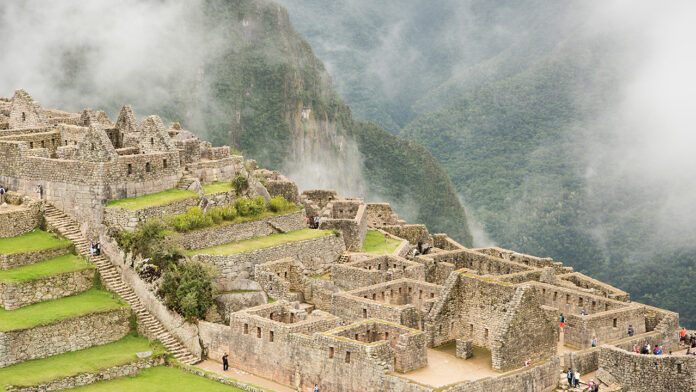Machu Picchu, the ancient Incan citadel nestled high in the Andes Mountains of Peru, is a testament to the architectural brilliance and cultural richness of the Incan civilization. In this article, we unravel the mysteries and delve into the intriguing facts that make Machu Picchu a timeless wonder, drawing travelers and archaeologists alike into its enigmatic embrace.
The Enigmatic Construction
Incan Engineering Marvel: Machu Picchu’s construction is a testament to the Incan mastery of stone. The precision with which massive stones were cut and fitted together without mortar has left archaeologists in awe of the engineering prowess of the Incan civilization.
Intihuatana: The Hitching Post of the Sun: The Intihuatana stone, often referred to as the Hitching Post of the Sun, is a prominent feature at Machu Picchu. It is believed to have astronomical significance, possibly serving as a ceremonial or ritualistic site.
The Lost City of the Incas
Rediscovery by Hiram Bingham: Machu Picchu was brought to the world’s attention in 1911 when American historian and explorer Hiram Bingham rediscovered the site. His expedition uncovered the well-preserved ruins hidden beneath centuries of overgrowth.
Theories on Its Purpose: While Machu Picchu’s original purpose remains a subject of scholarly debate, theories range from it being a royal estate to a ceremonial or religious site. Its precise function within the Incan Empire continues to be a source of fascination.
Breathtaking Panoramic Views
Huayna Picchu and Machu Picchu Mountain: The stunning backdrop of Huayna Picchu and Machu Picchu Mountain adds to the allure of the citadel. Visitors can hike to these vantage points for panoramic views of the entire site, providing a breathtaking perspective of Machu Picchu’s grandeur.
Sun Gate: A Majestic Entrance: The Sun Gate, also known as Inti Punku, served as a main entrance to Machu Picchu for those traversing the Inca Trail. Today, it offers visitors a picturesque view of the citadel as they approach along the ancient trail.
UNESCO World Heritage Site
Recognition and Preservation: Machu Picchu was designated a UNESCO World Heritage Site in 1983, acknowledging its cultural and historical significance. Efforts have been made to preserve and protect the site, balancing tourism with conservation.
Threats to Conservation: The delicate balance between tourism and preservation poses challenges. Measures are continuously taken to address issues such as erosion, landslides, and the impact of visitor footfall on the ancient structures.
Inca Trail: A Journey Through History
Trekking the Inca Trail: The Inca Trail, a network of ancient pathways leading to Machu Picchu, offers adventurers a chance to follow in the footsteps of the ancient Incas. The journey is a pilgrimage through stunning landscapes and historical sites.
Conservation Measures for the Inca Trail: Due to the environmental impact of foot traffic, measures have been implemented to regulate the number of trekkers on the Inca Trail. Permits and guidelines aim to preserve the integrity of this ancient pilgrimage route.
Agricultural Terraces and Urban Design
Terraced Agriculture: The agricultural terraces at Machu Picchu showcase the Incas’ advanced understanding of farming in challenging mountainous terrain. These terraces not only provided sustenance but also prevented soil erosion.
Urban Layout and Architecture: The urban layout of Machu Picchu includes plazas, temples, and residential areas. The Temple of the Sun, the Room of the Three Windows, and the Sacred Plaza are architectural marvels that offer glimpses into the Incan way of life.
Spiritual Significance
Sacred Connection with the Cosmos: Many aspects of Machu Picchu, including its orientation and the presence of sacred geometrical shapes, suggest a connection to Incan spiritual beliefs. The site’s alignment with celestial events adds a mystical dimension to its significance.
Spiritual Pilgrimage for Modern Seekers: Machu Picchu continues to attract spiritual seekers, drawing those interested in energy vortexes and metaphysical experiences. The site’s perceived spiritual energy adds another layer to its allure.
Ongoing Archaeological Discoveries
Llactapata: Rediscovered Connections: Ongoing archaeological excavations in the surrounding areas have led to the rediscovery of sites like Llactapata, further illuminating the network of ancient Incan settlements connected to Machu Picchu.
Future Exploration: Advancements in technology, including LiDAR (Light Detection and Ranging), offer new possibilities for uncovering hidden structures and gaining a more comprehensive understanding of Machu Picchu’s intricate layout.
Conclusion: Machu Picchu’s Timeless Allure
In conclusion, Machu Picchu stands as a testament to the ingenuity of the Incan civilization and the mysteries that continue to captivate the world. From its awe-inspiring construction to its spiritual significance, the ancient citadel is a treasure trove of historical, cultural, and archaeological wonders. As visitors continue to marvel at its breathtaking vistas and archaeologists uncover new secrets, Machu Picchu’s allure remains timeless—a living testament to the enduring legacy of the Incan people.

